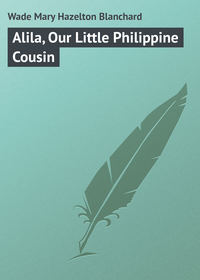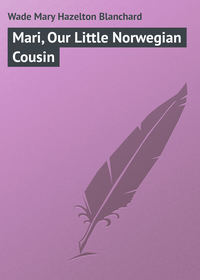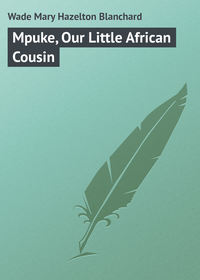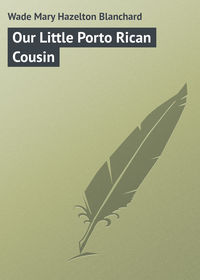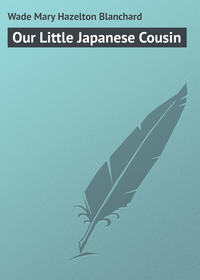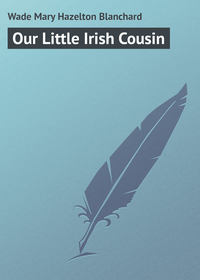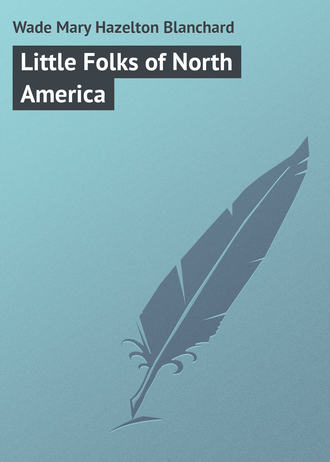 полная версия
полная версияLittle Folks of North America
Early in the eighteenth century, a brave seaman named Vitus Behring was sailing under the orders of Peter the Great of Russia. He crossed the Pacific ocean from Asia and traveled far into the north. He passed through a strait and entered a sea, both of which were named in his honor, Behring. Then he coasted along the shores of a land whose mountains often rose up out of the ocean. He was the first white man to look on the peninsula of Alaska.
A dreadful storm arose during this voyage and Vitus Behring and his men were wrecked on a small island to which also the name of the commander was given. Here he died, and here his men built a vessel out of what they saved from the wreck, and sailed away for home to tell of what had been discovered.
Time went by and other Russian ships visited Alaska and began to trade with the natives for the furs which they got from the wild animals roaming through the country. After a while they built small stations here and there on the coast, for the purpose of trading, and to these stations ships came regularly to receive loads of seal and fox, beaver and martin skins which the Indians and the Eskimos were glad to trap and kill, when they found they could get bright-colored blankets, tobacco, and many other things in exchange for them.
In this way it came about that a few Russian children with blue eyes and yellow hair found their way to Alaska, and lived in rough log houses with wild-looking Indians and Eskimos for their neighbors. About fifty years ago the children of the United States began to hear many stories of Alaska. Their parents told them that Russian fur-traders had made fortunes there. Moreover, Russia was willing to sell the country for a few million dollars.
Some people said, “Why should not Americans buy it? Besides the valuable furs, there are rich forests in Alaska.”
At this time a statesman by the name of Seward was urging the United States to purchase that far-away peninsula, for he was quite sure this country would be well repaid for doing so. People listened to his reasons, and at last they decided to follow Mr. Seward’s advice, and Russian America, as it had been called up to that time, received its new name of Alaska, and became a territory of the United States. There were many, however, who thought it a most foolish purchase and often spoke of it as “Seward’s folly.” To-day everyone looks upon it, instead, as “Seward’s wisdom,” for it has made many an American child’s father rich, not only through its furs, but also through the salmon caught in its waters and the gold found in its mines.
The Little EskimosAlong the northern and western shores of Alaska, in the coldest part of the country, are scattered villages of the Eskimos. They are much like their brothers and sisters of Greenland. They dress in furs, and live chiefly on the fat meat of the seal and walrus. They seldom go far from the shore, because most of their food is obtained from the sea.
Their winter homes are small stone huts built partly underground, and with long tunnel-like entrances dug out of the earth and leading down into them. Turf and mud are plastered over the cone-shaped roofs, while in the middle, at the top of each, there is a small opening to let out the smoke. Directly under this opening is the family fireplace where wood is burnt except in the most northern homes. There the Eskimo children help their mothers tend just such lamps of seal-oil as the Greenlanders use, since it is too cold for trees to grow on the frozen marshes that stretch along the shores of the Arctic ocean. Oil is the one thing that they can obtain, and of this they must make use. In the short summer the little Eskimos of Alaska delight in the skin tents which their mothers stretch over light frames, while from time to time, during the spring and fall, they camp out in snow-houses.
They have their teams of dogs, which they pet and train. They have their skin-covered kayaks made in much the same way as those of the Greenland Eskimos, although it is very probable that they have never heard of their relations in that distant island. Mother Nature has provided certain things to maintain life in the frozen lands of the north, – not many to be sure; but the minds of those who dwell in places far distant from each other seem to have thought out much the same way of using them.
In these far northern regions the little Eskimos are often treated to a most beautiful sight. It is the northern lights, which flash over the heavens during the long cold winter nights, and are far brighter than are ever seen in Greenland or Iceland. Think of the most glorious rainbow you can imagine, – the brilliant green, yellow, blue, and violet spreading out in great waves of light over the sky. For a few moments it is as light as day. Then the colors fade away and all is darkness once more. It is not strange that the little Eskimos who stand watching are filled anew with wonder and think of it as the work of great and powerful spirits.
Among the IndiansAlong the southern shores of Alaska and on the banks of the rivers of the inland country are many Indian villages. They belong to several different tribes, but their way of living is much the same. Their huts are generally built of logs and bark, and they like best to dress in the bright-colored blankets, with red and yellow handkerchiefs on their heads, which they get in barter from the white traders. The red children have broad faces, black eyes, and black hair. Long ago, before the white men lived among them, these little Indians believed that they could make themselves more beautiful by tattooing their bodies. As these poor children grew up, they suffered many an hour of pain while the red or blue lines were marked on their chins by threads drawn along under the skin. Now, however, as the red men learn more and more of the ways of the white people, this cruel fashion is passing away. Many of the little Indians of Alaska go to school, where they take delight in learning to read and write. They are rather slow, but they are very patient, and proud indeed are they when they have mastered a hard lesson.
Most of them, however, are still in Mother Nature’s school alone, but their bright eyes are continually learning new things about the trees and the flowers, and the wild animals that roam through the forests and over the snowfields. These children of the red men delight in the water. The rivers of Alaska are the roadways, and here as well as on the coast, the boys paddle in their canoes for many a mile, hunting, fishing, and racing. Many an Indian has a morning bath in the ice-cold river, or in the ocean. “It will make my child strong,” his mother thinks, and so, whether it be a bright summer day, or a dark and freezing winter morning, in he goes for his daily plunge.
In front of many homes of the red children are tall, straight posts. Horrible-looking faces are carved upon these posts, as well as the figures of birds, fishes and wild animals.
“It is the totem-pole,” the Indian child will tell you with pride. The totem is the mark of his family. It is even more to him than is the coat-of-arms to many an Englishman. Suppose a wolf is the principal carving upon the pole. The child’s parents tell him it is their guardian, and the child learns to look upon it with reverence. Perhaps his grandfather or his great-grandfather dreamed of the wolf while he was fasting alone in the forest. He thought it was a vision from heaven, and he chose it henceforth to be the totem of his tribe or of his family.
Candle FishSince Alaska lies so far north, the winter must be long and dark. No lamps are needed to light the huts, however, if the children and their parents have provided themselves with enough candle-fish. These fish are about ten inches long, but quite thin. Strange to say, they are full of oil, and after being carefully dried, they will burn like torches. One of them will give as much light as two or three candles. At certain times of the year, schools of candle-fish enter the mouths of the rivers which empty into the ocean. The Indian children watch for their coming, and as soon as they appear, they and their parents go down to the shore and rake them out of the water by the bushel.
The Indian mothers not only dry the candle-fish for lighting their winter homes, but they also boil great numbers of them, for in this way they get a supply of hardened oil that takes the place of butter. The older and the more rancid this oil is, the better they like it.
In the short Alaskan summer the fruits and flowers grow very fast. It seems as though they must make the best possible use of the sunshine. In the southern part of the country the children can pick the most beautiful bouquets of white clover, maiden-hair ferns, and bright-colored wild flowers. They go berrying to their hearts’ content, too. There are fields and fields filled with tall blueberry bushes; there are the juicy yellow salmon berries; there are cranberries, blackberries, red and white currants, and bilberries, but the best of all are the sweet, wild strawberries that almost melt in the mouth. Certainly the children of the greater part of Alaska can feast on good things in summer. Why, the berries are so plentiful that not only the boys and girls, but the birds of the country get fat with the rich living. Many of the wild geese, indeed, can hardly fly after the summer’s feast, and are then easily caught by the boys and their fathers.
Even in winter there are berries to add to the dinner of fish and oil, for during the summer the children gather many bushels for their mothers to dry and store away. Berries, fish and oil! Surely, think the people, a person should be content if he has plenty of these three dainties. There are deer and bears, mountain goats, wild ducks and geese. All these are good for a change, but they cannot compare with fish, either fresh or dried, with an abundance of hardened oil spread over them.
Along the coasts there are clams and oysters, mussels and crabs. The natives like these, too; they dry and string them on long blades of grass for the winter season. Thus they have more variety of food than the people of Greenland.
Catching SalmonThe boys of southern Alaska spend much time along the shores of the waters which teem with cod and halibut, besides many smaller fish. But most plentiful of all are the salmon that leave the ocean as spring opens and enter the mouths of the rivers. How busy the people are then! The men and boys have nets all ready, and with these they paddle out into the water in their canoes. After the season has well opened, they load their boats again and again in one day, and before the season is over there is many a time when they simply scoop the fish on to the shore with the blades of their paddles. Salmon are so sweet and fat, that the Indians are very fond of them. They can feast on fresh fish during the summer, while the women split up great numbers of them and hang them up on racks to dry for the coming winter.
Many years ago the white people learned that salmon are plentiful in Alaska, so that now the Indians are busy, not only in getting the fish for themselves, but for the factories where tin boxes and casks are made by the hundreds and packed with the delicious fish which are sent to the people of the United States and elsewhere. Sometimes the children of the white men who are in the salmon business go to live in Alaska and there they see many a strange sight. They look with wonder at the half-naked Indian boys and girls, with their wild bright eyes. They watch with envy as the red children glide over the water in their light bark canoes, and race with one another on the rivers. They shudder at the hideous faces carved on the totem poles. They look on with delight at the dances and the odd games of their red neighbors, and they laugh when they hear of Mr. Bruin and his way of catching fish. They would rather not be alone, however, when the bear is creeping down through the woods to get his dinner. They think he might possibly prefer a white child to the delicate pink salmon, but in this they are quite mistaken.
BearsThe bears seem to know when the salmon arrive as well as the human beings do. They leave their homes in the woods and make their way down to the quiet little coves along the shore. When the fish come crowding in, out go the bears’ paws into the water, scooping in the salmon of which they are so fond. Mr. Bruin swallows one after another until he has had his fill; then he creeps away as quietly as he came, to seek safety once more among the trees of the forest. Sometimes, alas, the white hunter discovers the trail and follows the bear to the shore. Then bang! bang! sounds through the air and Bruin’s salmon feasts are over.
There are many bears in Alaska, – black, cinnamon, and in the far north the dangerous grizzly; but the red boy’s father teaches him that it is best not to kill these animals. He has an idea that the bear’s spirit will be angry and harm him if he does so. The white traders, however, want the skins and are willing to pay a good price for them, so the Indians sometimes go bear hunting, although after they meet with success, they go through strange rites, hoping thus to make peace with the bear’s spirit.
Whales and Sea OttersAs the children who live along the shores of Alaska look out to sea, they sometimes notice what appears to be a water spout, then another and another far away in the distance. It is the blowing of a school of whales, which have come up to the surface for fresh air. They run to tell the news to the older folks of the village, for nothing could be more delicious than a dinner of whale. The men get their lances ready at once and hurry down to their canoes. Then away they paddle with all their might in the direction in which the monsters have been seen.
If they succeed in coming upon the whales, there is busy and dangerous work for a while. The hunters must not think of fear as they draw near to the huge creatures to throw their spears in such a way as to inflict dangerous wounds. Then away they must paddle for dear life so as not to be swamped by the whales as they dive below. Before the men threw their lances they carefully fastened sealskin buoys to them. As the whales plunge after being wounded, these buoys on the surface make it hard for them to stay below and they are soon worn out. When the hunters have wounded a whale as much as possible, they go home and wait for the tide to bring the dead animal ashore. Then there is a great feast in the village and all make merry. Many years ago white men fitted out big ships to sail into the northern waters after whales. In those days the oil was burnt in lamps; but now, since kerosene is plentiful, whale-oil with its unpleasant odor is little used. Whale-bone, however, is still valuable, and for this reason many ships are still engaged hunting these monsters of the sea.
The Alaskan boys are ever on the watch for sea-otters. These shy creatures never leave the ocean, except when they have little ones to care for. Even then, it is said, the mother sea-otter sometimes chooses a bed of sea-weed out on the waves and there she floats, with her babes beside her. It is a curious sight. More curious still is it to see one of these huge creatures asleep on her back, floating along on the surface of the water, with her little ones held in her close embrace. A party of Indians often go on a sea-otter hunt, for the animal is covered with fine black fur, through which are scattered long white hairs. It is very beautiful, and the white traders are always willing to pay a large sum for a sea-otter skin.
The hunters must paddle quite a distance out to sea before they begin to look for an otter’s nose to appear above the surface of the water as the creature comes up to breathe. The moment it is seen, they swing their canoes around in a wide circle. Then, with spears in hand, they watch eagerly for the right moment to hurl them. Many days sometimes pass before the patient watchers are rewarded with even the sight of the longed-for prize, and even then the hunters may fail to secure it, yet it is worth all the time they spend, for the fur is among the richest and the rarest in the world. Indeed, the sea-otter is rarely found except in the waters which wash the shores of Alaska.
More than once an Indian child has tried to raise a sea-otter, but he has never succeeded, for he cannot make the little creature eat, and it soon starves to death.
Seal-HuntingYou remember that on the islands reaching out into the west from Alaska, many children are living who are neither Indians nor Eskimos. They are called Aleuts. Before the coming of the white people the Aleuts looked much like the Japanese, but afterwards the Russians married among them, so that many of their children to-day have lost much of the appearance of the yellow race.
Few trees grow around the homes of the Aleuts but enough wood drifts over from the forests of the mainland to furnish fuel for their fires. They live in dark, damp huts built mostly underground, so it is no wonder that they love best to be out-of-doors when the hills and the fields are covered with pretty grasses, mosses, and bright flowers in the summer time. Many blue foxes run wild through the islands and these are hunted by the men, for the fur is very valuable and the white traders are always ready to buy the skins.
The little Aleuts love the sea, where they paddle about in their light canoes, or fish in the clear waters. Northward from the Aleutian islands are two others called the Pribylov or Seal Islands. Thick fogs shut them in during the summer, while in the winter the shores are surrounded with drift ice. They are very important, however, because they are the greatest hunting grounds for seals in the whole world. The Aleuts are the only people who live on these islands, except for a few white men who oversee the work of killing the seals. The villages are scattered here and there, close to the sea, each with its church and its school-house, and during the winter the little Aleuts pass their time quietly in play and study.
But when the spring comes, they are full of excitement, as they watch the seals, big and little, old and young, gather on their shores. No one knows how far these creatures have traveled, nor in what distant waters they have passed the winter. Come they do, however, by hundreds and thousands, and on the shores of these islands the baby seals are born. They are graceful little creatures, and play and frolic together like kittens. When they are born they are quite blind, but they begin to see after a few days. When they are about six weeks old their mother leads them down to the water for their first swim. At first they are afraid, but their mother coaxes and urges them on, so that in a short time they are able to swim about with ease. Before long they enjoy this new water-life as much as their fathers and mothers do, and are soon able to hunt for the small fishes and kelp which are the seals’ principal food. The hunting season lasts about six weeks, and begins early in June, soon after the arrival of the seals. The men arm themselves with clubs, and then drive the seals up into a cleared space away from the shore, where the animals are helpless, because they are clumsy and move slowly when out of the water. A single blow on the seal’s head is enough to end his life, and to give the hunter the beautiful soft skin he wishes.
Year after year goes around and each summer brings herds of seals to these islands, with no understanding that thousands of their number are coming only to die at the hands of the hunters. Sometimes the Indian boys catch baby seals and keep therm for pets. They are gentle little creatures, and soon learn to love their young masters, and to follow them about. They bark much like puppies and are often taught to do tricks.
Hunting in AlaskaThe Indian boys of Alaska could tell you many stories about the wild animals they hunt with their fathers. There are martens, with their soft brown fur, black and silver foxes, beavers, muskrats, mountain-goats, moose, deer, otter and many others which roam in great numbers over the hills and through the valleys. The Yukon River, one of the largest in the world, is the most important one in Alaska, and through the country on either side of it the wild animals are found in great numbers. The hunters get many of them in traps. There, on the banks of that great river, hundreds of canvas-back ducks lay their eggs on the platforms of grass and twigs which they build on the low marshes, and the Indian children go in parties to hunt for their eggs and the baby ducklings.
The older boys trap many a fox and musk-rat, whose skins they proudly give to their fathers who will sell them to the white traders, and get sugar, tea, and blankets in exchange. They spend hours in hunting along the banks of the stream for beaver villages, and taking these little creatures unawares.
The Gold MinesNot many years ago it was found that not only furs and salmon could be obtained in Alaska, but in some places the rocks were rich with precious gold. The Treadmill gold-mine is one of the most valuable in the world. The men who work there do not have to leave the sunlight and dig far down under the earth, for the mine, or rather quarry, is above ground, and there the workers are kept busy, breaking away the masses of rock which are afterwards crushed in heavy stamps, to separate the gold from the quartz. When darkness falls, electric lights make everything as bright as day. There are more than two hundred of these stamps at the Treadmill mine, so you can imagine that when all are at work crushing the great masses of rock, the noise is enough to deafen one’s ears.
As the gold is separated, it is made up into bricks, each one of which is worth between fifteen and eighteen thousand dollars! These bricks are afterwards sent in ship loads to the mint at San Francisco.
SitkaOn an island off the southern shore of Alaska, lies Sitka, the capital of the territory. It was built long ago when the Russians owned the country, and even now you may visit the moss-grown Castle, where the governors always lived. There they held many a feast and dance, to which the savage Indian chiefs from the country around were sometimes invited. Fine glass and silver, which had come all the way from Russia, sparkled at these feasts. Grand ladies in silks and satins laughed and chatted beneath the soft light of hundreds of candles, trying perhaps to forget their longing for home.
Now that Alaska belongs to the United States, many things have been done to make Sitka healthful and comfortable. The new governors chose Indians for policemen. Very grand they must have thought themselves when they first put on their blue uniforms, with gilt letters on their caps and silver stars on their breasts.
Among other wise things, the governor made the law, that the children must go to school. Now, there were many Indians in Sitka, and they did not understand what a fine thing it is to have learning. But the governor directed that all the houses must be numbered. Not only this, but each child of the house was given a number, and this was stamped on a tiny, round plate which he was obliged to wear on a string tied around his neck. He had to show this number to the school-teacher and in this way one could keep track of him.
Whenever an excursion steamer enters the harbor, the people of Sitka make ready for a holiday, while the Indians hasten to get out their blankets to sell to the visitors. Many people travel in Alaska in the summer time, on purpose to see the wonderful sights there, – the high mountains covered with snow, the valleys filled with flowers, the wild Indians, the strange huts before which the totem poles rise high in the air; but most interesting of all are the glaciers, whose beginning is far up in the snow-covered mountains. Slowly but surely, they make their way down to the sea, growing larger as other and smaller glaciers join themselves to them. There is a certain bay in Alaska which the summer visitors are sure to visit if they can possibly do so. It is called Glacier Bay, because of an immense glacier which enters it. Imagine yourself on a steamer entering this bay on a bright sunshiny day of mid-summer. Yet you shiver, for the air begins to grow colder and colder. It is no wonder, for icebergs meet your eyes on every side. They are clear as crystal and are lighted with the most beautiful colors, – delicate pinks and blues. As you look, you fancy that they have the shapes of different animals or of grand castles. Some of them, indeed, seem like great lonely beings. From time to time flocks of birds pass overhead and light on the bergs for a short rest.


